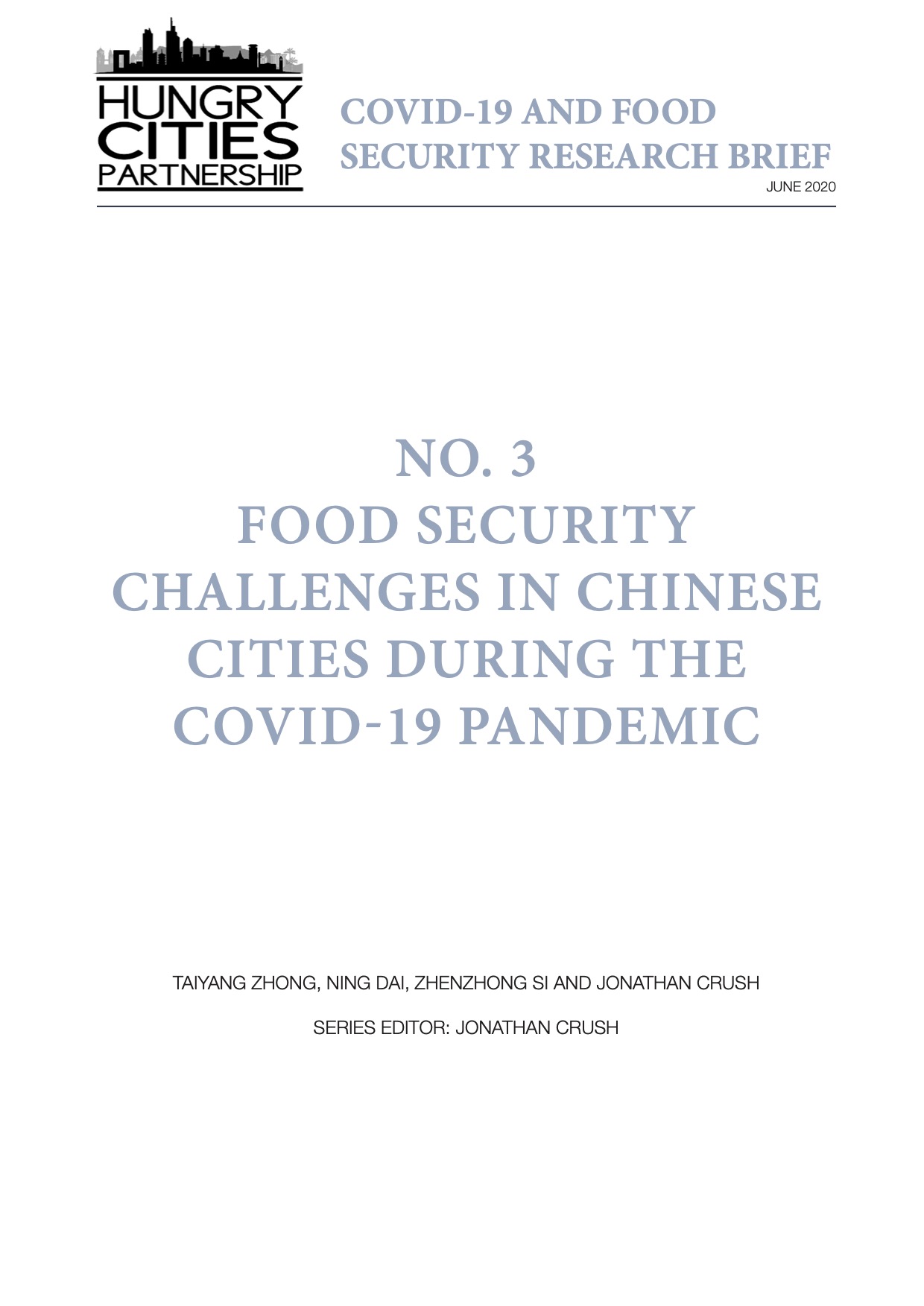Globally, one of the major consequences of public health responses to the spread of COVID-19 is seen as an increase in food insecurity as agriculture and food supply chains are interrupted, food outlets are shuttered, household income to spend on food declines, and people are partially or completely quarantined at home (CFS 2020, Clapp 2020, Crush and Si 2020, WFP 2020). These impacts are being monitored by the Hungry Cities Partnership (HCP) in a series of blogs and a media observatory. The 11 million residents of the original epicentre of the pandemic in Wuhan, China, were subject to a weeks-long complete shutdown of all economic and social activity and a rigid lockdown of residential communities (Zhong et al 2020). Other Chinese cities experienced varying degrees of restriction on movement, economic shutdown, and residential lockdown. One of these was Nanjing, a city of over 8 million people located about 400km east of Wuhan. By comparing the two cities, new insights are provided on the impacts of pandemic responses on the food security of urban populations in China. This research brief summarizes some of the early findings from a household food security survey conducted by the HCP from March 24–31, 2020.

